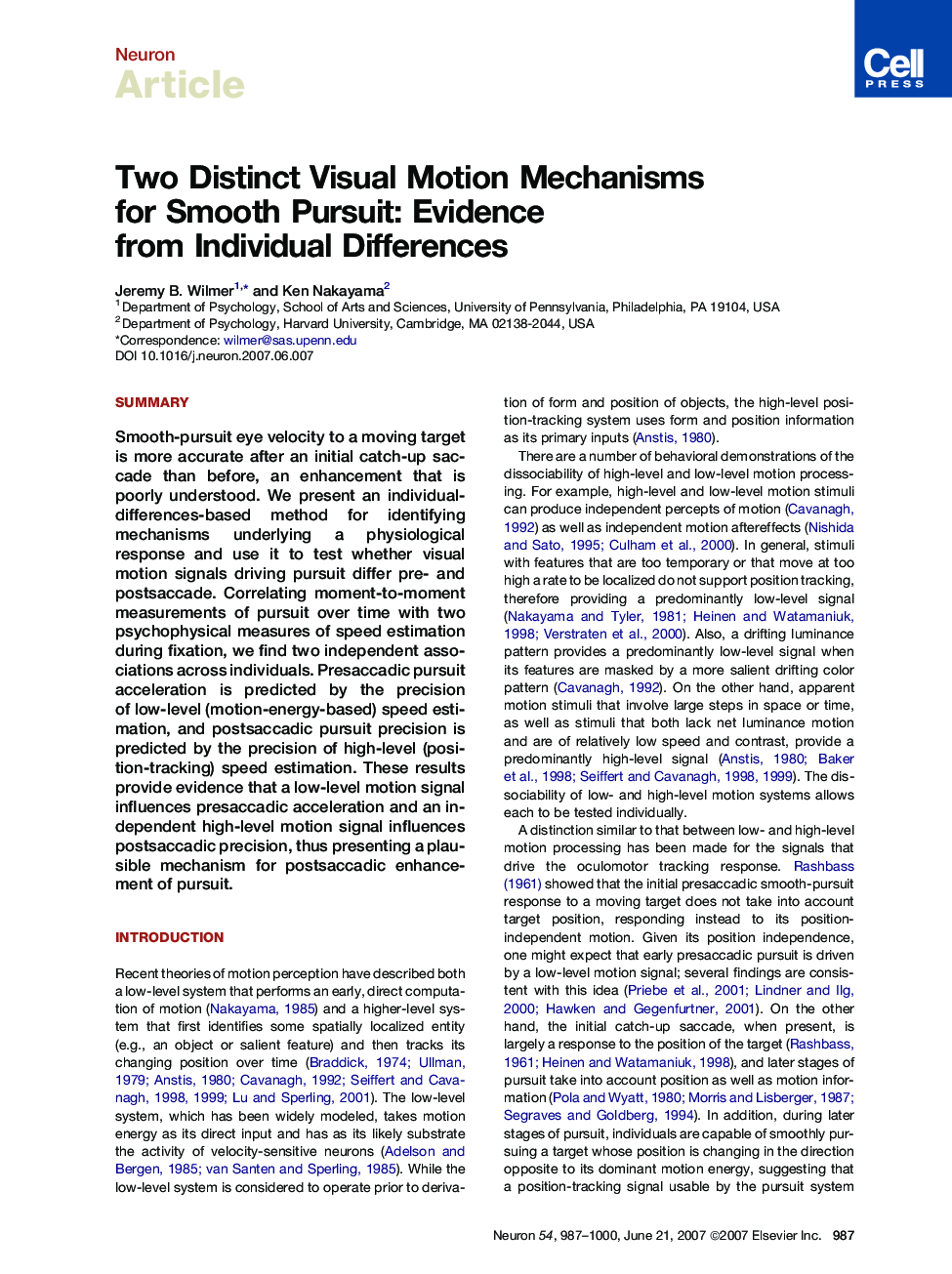| Article ID | Journal | Published Year | Pages | File Type |
|---|---|---|---|---|
| 4323224 | Neuron | 2007 | 14 Pages |
SummarySmooth-pursuit eye velocity to a moving target is more accurate after an initial catch-up saccade than before, an enhancement that is poorly understood. We present an individual-differences-based method for identifying mechanisms underlying a physiological response and use it to test whether visual motion signals driving pursuit differ pre- and postsaccade. Correlating moment-to-moment measurements of pursuit over time with two psychophysical measures of speed estimation during fixation, we find two independent associations across individuals. Presaccadic pursuit acceleration is predicted by the precision of low-level (motion-energy-based) speed estimation, and postsaccadic pursuit precision is predicted by the precision of high-level (position-tracking) speed estimation. These results provide evidence that a low-level motion signal influences presaccadic acceleration and an independent high-level motion signal influences postsaccadic precision, thus presenting a plausible mechanism for postsaccadic enhancement of pursuit.
